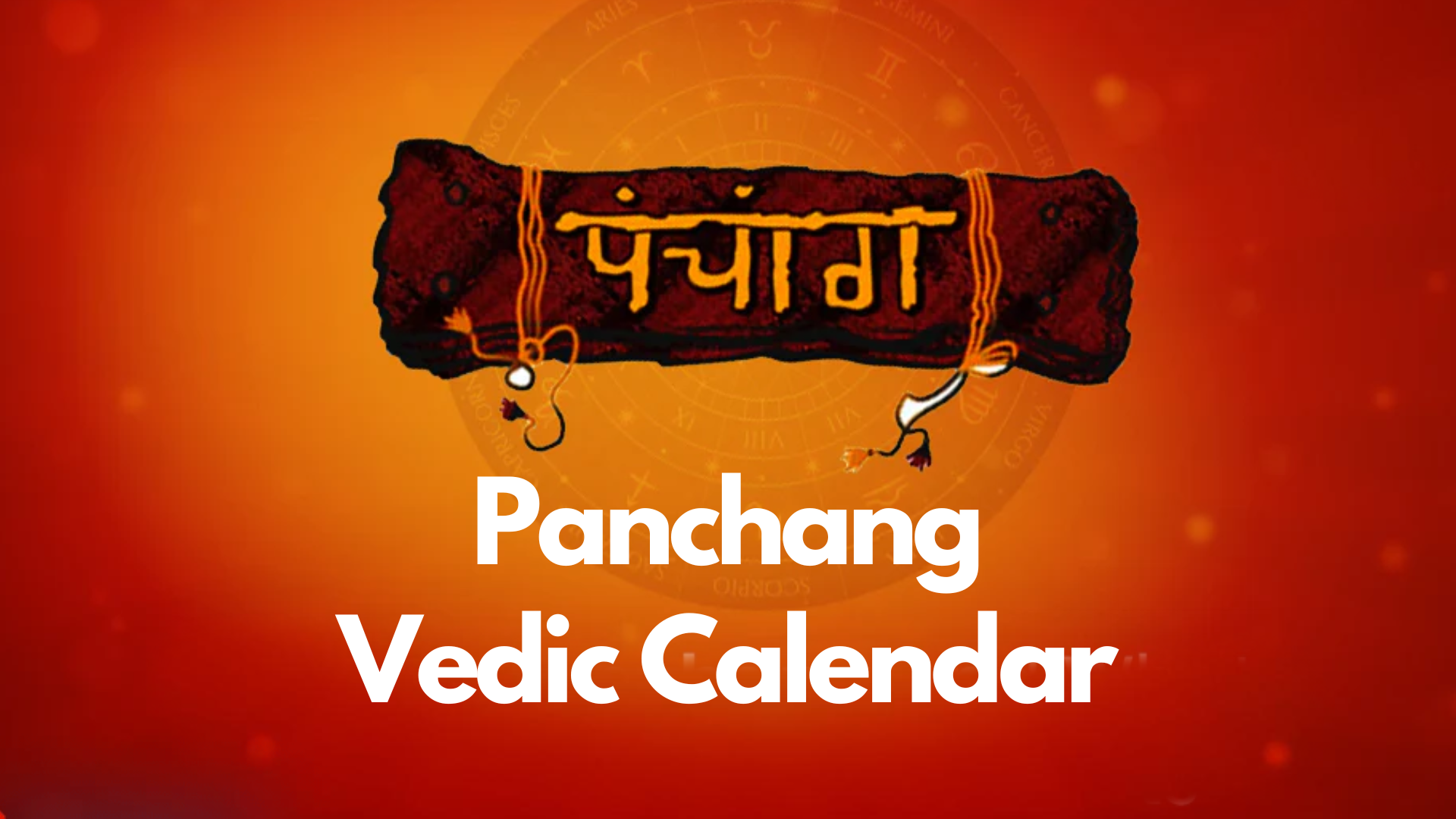Panchang is a vital tool for determining Indian festivals and auspicious timings by observing celestial movements. It serves as a Hindu Almanac, guiding us with important dates and timings. In this article, we delve into the significance of Panchang: Vedic Calendar.
Panchang is extensively used in Vedic Astrology, relying on visible planets for calculations, as stated by Maharishi Vashishth in Piyush Dhara.
प्रत्यक्षं ज्योतिषः शास्त्रम् चन्द्रार्कौयत्रसाक्षिणौ।
– पीयुषधारा, महर्षि वसिष्ठ
Astrology bases predictions on these visible celestial bodies. Panchang is a comprehensive text providing details on nakshatras, zodiac signs, and planetary movements. Understanding planetary positions is crucial for harnessing specific time energies effectively. The Vedic calendar, Panchang, offers detailed insights into planetary positions, with its name denoting its five integral parts as described in Vedang Jyotish.
पञ्च अङ्ग इति पन्चान्ग।
– वेदाङ्ग ज्योतिष
“Those who have five parts or limbs can be defined as Panchang.”
The five parts of panchang are Tithi (Date), Vaar (Day), Nakshatra, Yoga and Karana. A verse stating the same is given in Ruk Jyotish.
तिथिवारं च नक्षत्रं योगः कारणमेव च।
यत्रै तत् पञ्चकं स्पष्टं पन्चान्ग तन् निगद्यते।।
– ऋक् ज्योतिष
“The source from where we get information about Tithi (Date), Vaar (Day), Nakshatra, Yoga and Karna is called Panchang.”
Now, let’s understand all these five elements in detail.
Tithi(Date):
The Tithi, or Date, is the first part of the Panchang, similar to today’s date. In Vedic Jyotish, the lunar day is known as Tithi. The moon’s position changes, causing waxing and waning. A verse in ‘Taittiriya Brahman’ explains this cycle:
चन्द्रमा वै पञ्चदशः।
– तैत्तिरीय ब्राह्मण
“The moon waxes for 15 days and wanes for 15 days.” The waxing phase is ‘Shukla Paksha,’ and the waning phase is ‘Krishna Paksha,’ forming a lunar month. A lunar month has 30 days, calculated by dividing 360 degrees of a circle by 30, giving 12 degrees per day. When the moon is 12 degrees ahead of the sun, it marks the first Tithi in the Vedic calendar. Full Moon occurs when the moon is 180 degrees from the sun, defining all Tithis based on this distance. Sometimes, anomalies like Tithi Vridhi or Tithi Kshaya occur in the Vedic calendar, affecting festival timings due to precise calculations based on the sun and moon’s positions.
Events like these can lead to the same festival lasting for two days or occurring the day after the usual date. This happens because Tithis are determined by precise calculations based on the sun and moon’s positions. According to ancient knowledge, there are five types of Tithis – Nanda, Bhadra, Jaya, Rikta, and Poorna. The Panchang guides us on what activities to undertake on specific Tithis to achieve desired outcomes like wealth, health, and success. A verse in Ruk Jyotish emphasizes the importance of Tithi:
तिथेस्तु श्रियम् आप्नोति।
– ऋक् ज्योतिष
“Knowledge of Tithi brings wealth and well-being.”
Vaar(Days):
In simple terms, the time from one sunrise to the next is known as a Vaar, or Day. According to Vedang Jyotish, a verse describes Vaar as the period between two sunrises.
उदयाद् उदयम् वारः।
– वेदाङ्ग ज्योतिष
Each of the seven days of the week is connected to one of the seven visible planets in the sky. A verse in Ruk Jyotish states that understanding and following specific activities on a particular Vaar can extend our lifespan.
वारात् आयुष्यवर्धनं।
– ऋक् ज्योतिष
Nakshatra(Constellation):
Nakshatra is described as something indestructible in Vedang Jyotish.
न क्षरति इति नक्षत्र।
– वेदाङ्ग ज्योतिष
“The one who is never destroyed is called Nakshatra.”
It signifies a cosmic measure like kilometers on Earth, determining planetary distances. There are 27 Nakshatras, each with specific guidelines in Vedang Jyotish. Following Nakshatra rules can help cleanse sins according to Ruk Jyotish:
नक्षत्रात् हरते पापम्।
– ऋक् ज्योतिष
“Nakshatra eradicates sins.”
Other than that The months of the Hindu calendar are named after Nakshatras where the full moon resides. Zodiac signs are also based on Nakshatras, with each having four phases. Understanding Nakshatras is crucial for accurate predictions in Vedang Jyotish.
Yoga:
Yoga, meaning union, is calculated in Panchang by the sun and moon’s speed, forming 27 Yogas like Nakshatras. Vedang Astrology states:
योग संदर्शयति अवसरः।
– वेदाङ्ग ज्योतिष
“Yoga indicates opportunities.”
Questions about marriage, wealth, and job changes relate to Yoga probabilities. Patanjali Yoga Shastra suggests curing diseases through Yoga, supported by Ruk Jyotish:
योगात् रोग निवारणं।
– ऋक् ज्योतिष
“Yoga can heal diseases.” Understanding and aligning activities with Yoga knowledge may aid in disease recovery.
Karana:
Ruk Jyotish states that Karana leads to work success.
करणात् कर्यसिध्धिः स्यात्।
– ऋक् ज्योतिष
Karana is half of a Tithi, completed when the moon moves 6 degrees past the sun. There are 11 Karanas, with the first seven moving and the last four static. Scriptures provide instructions for activities during moving and static Karanas.
Understanding Panchang is crucial for success, as per Ruk Jyotish Panchang. Knowledge of Panchang leads to success and absolves sins, like bathing in the Ganga River.
जानाति काले पञ्चाङ्ग तस्य पापम् न विद्यते।
पन्चान्गस्य फलं श्रुत्वा गङ्गास्नानफलं लभेत्।।
– ऋक् ज्योतिष
“If you possess the knowledge of Panchang, then you will get success in everything and you will get rid of all your sins. Not only that but also the knowledge of Panchang will provide you with as auspicious results as taking a holy bath in the Ganga river or going on a pilgrimage.”
Panchang reveals cosmic energy patterns, aligning efforts with this energy can bring success.
Shubham Bhavatu.








